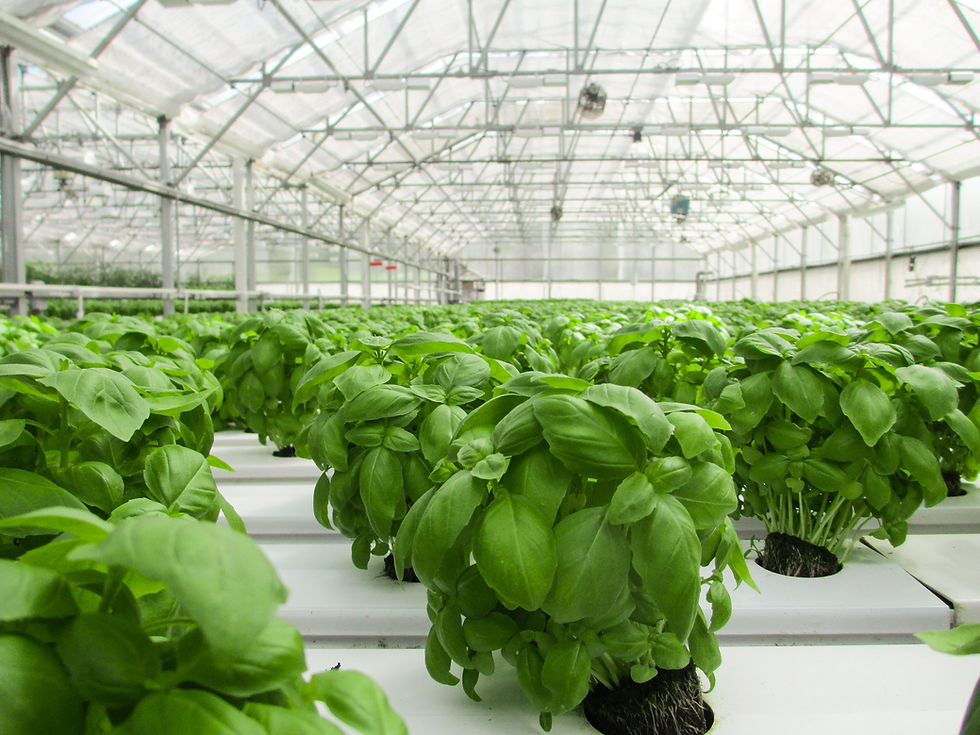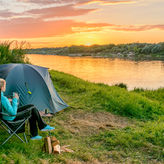Sustainable Living for All Ages: 7 Earth-Friendly Kits That Teach, Grow, and Inspire
- Aria Dana

- Aug 7
- 9 min read
Updated: Sep 1
In an era where environmental awareness has become more than just a trend, sustainable living has evolved into a conscious lifestyle choice embraced by families across all generations.
The Terra Futura movement - representing a future-oriented approach to environmental stewardship - reflects our collective shift toward more mindful consumption and educational practices. With Pinterest witnessing a surge in eco-learning and sustainability content, parents, educators, and individuals are increasingly seeking hands-on ways to integrate environmental consciousness into their daily lives.
The intersection of Science, Technology, Engineering, and Mathematics (STEM) education with sustainability has created powerful learning opportunities that extend far beyond traditional classroom settings.
Research consistently shows that early childhood education plays a crucial role in developing environmental consciousness, with 85% of participants in eco-literacy programs demonstrating improved understanding of ecosystem interconnectedness and nature protection. This growing awareness has sparked demand for educational tools that make sustainability both accessible and engaging for learners of all ages.
Eco-Education at Home
The foundation of sustainable living begins with understanding our natural world through hands-on exploration. Modern STEM education for sustainable development emphasizes interactive, learner-centered approaches that foster independent thinking and environmental responsibility. These educational experiences are particularly effective when they combine practical activities with scientific understanding, allowing learners to see the direct impact of their actions on the environment.
Garden-based interventions have proven especially powerful in early childhood education, showing significant improvements in nutrition-related outcomes and environmental awareness. Research demonstrates that children who participate in garden-based learning programs develop stronger connections to nature and exhibit more environmentally conscious behaviors throughout their lives. The integration of technology with traditional gardening practices - such as using sensor kits to monitor soil moisture and plant growth - creates engaging learning experiences that bridge the gap between digital natives and natural environments.
The modular approach to STEM learning has gained particular traction, with science kits designed for children aged 8-14 incorporating components that can be recombined for various experiments and projects. These systems encourage creativity while teaching fundamental scientific principles, making complex environmental concepts accessible through hands-on experimentation.
Garden-to-Table Fun
The garden-to-table movement represents one of the most tangible ways to connect environmental education with daily life. Studies focusing on school garden programs have shown remarkable results, with children's vegetable consumption rates increasing by 15-26% when they participate in combined gardening and nutrition education programs. This hands-on approach to food education helps children understand the complete cycle from seed to plate, fostering appreciation for both agricultural processes and nutritional choices.
Aquaponics and hydroponic systems have emerged as particularly effective educational tools, combining plant science with sustainable food production methods. These closed-loop systems demonstrate principles of ecosystem balance while producing fresh vegetables and herbs that families can incorporate into their meals.

Research shows that lemon basil grown in aquaponic systems contains 52.5% higher flavonoid content compared to traditional hydroponic cultivation, highlighting the nutritional benefits of sustainable growing methods.
Composting education has evolved beyond simple waste reduction to become a comprehensive lesson in decomposition, soil health, and circular economy principles.

Modern composting kits designed for educational use incorporate measurement tools and observation guides that transform waste management into scientific inquiry. Children learn to monitor temperature changes, observe decomposition stages, and understand the role of microorganisms in creating nutrient-rich soil amendments.
The integration of sensory learning through gardening activities has shown particular promise. The development of sensor kits specifically designed for children, such as the "Grüt" system, helps young learners monitor plant health while developing technological literacy. These tools address food waste concerns by helping children develop a consciousness about food sources and the effort required to produce nutritious meals.
Rustic Wellness Spaces
The aesthetic component of sustainable living has gained significant importance, with rustic and natural design elements becoming central to creating mindful learning environments. The use of traditional materials like wood in educational settings connects learners to natural processes while reducing reliance on synthetic alternatives. Handcrafted learning materials made from local, sustainable sources provide tactile experiences that mass-produced plastic alternatives cannot replicate.
Wooden educational tools serve multiple purposes: they reduce environmental impact, provide authentic sensory experiences, and often last longer than synthetic alternatives. Research into traditional woodworking techniques in educational settings shows that students develop deeper appreciation for material properties and craftsmanship when working with natural materials. The incorporation of wooden puzzles, building blocks, and scientific instruments creates learning environments that feel both purposeful and aesthetically pleasing.

The concept of biophilic design - integrating natural elements into living and learning spaces - has shown significant benefits for psychological well-being and cognitive function. Creating wellness spaces that incorporate plants, natural materials, and earth-toned color palettes helps reduce environmental stress while promoting mindful reflection and learning.
Maker spaces that emphasize traditional crafts alongside modern technology create unique learning environments where sustainability and innovation intersect. These spaces often feature renewable materials, natural lighting, and designs that minimize energy consumption while maximizing learning potential.
Must-Try Eco Kits
Based on extensive research into sustainable educational products and their proven effectiveness, the following kits represent the best options for different age groups and learning objectives:
Kit Type | Best For | Features |
Hydroponic Garden Systems | Ages 8+ | Self-contained growing environment, pH monitoring, nutrient solutions |
Solar-Powered Science Kits | Ages 10+ | Renewable energy experiments, circuit building, weather monitoring |
Composting Observation Chambers | Ages 5+ | Transparent viewing sections, temperature monitoring, decomposition tracking |
Wooden Building Sets with STEM Integration | Ages 6+ | Natural materials, engineering challenges, mathematical concepts |
Botanical Pressing and Classification Kits | Ages 7+ | Plant identification guides, preservation materials, scientific documentation |
Weather Station Construction Sets | Ages 9+ | Data logging, environmental monitoring, climate tracking |
Ecosystem-in-a-Bottle Kits | Ages 6+ | Closed-loop systems, organism observation, balance principles |

Hydroponic Garden Systems
Hydroponic garden systems enhance STEM learning by teaching plant biology, sustainability, and problem-solving through hands-on, tech-integrated experiences. Practically, they offer efficient, space-saving, and eco-friendly ways to grow fresh food year-round—want to try it yourself? 🌱 [You may check this out 🔗]

Solar-Powered Science Kits
This is an exciting way to introduce learners of all ages to renewable energy concepts through hands-on exploration. These kits teach how sunlight is converted into electricity, powering mini robots, vehicles, or weather stations—perfect for building STEM skills while inspiring environmental responsibility.
Whether used in classrooms or at home, they foster curiosity in engineering and clean technology. Ready to spark solar-powered learning? ☀️ [You may check this out 🔗]

Composting Observation Chambers
Turn everyday food scraps into science experiments, helping learners explore decomposition, soil health, and the role of microorganisms. These transparent chambers make it easy to monitor temperature, moisture, and compost stages—perfect for teaching sustainability and circular economy concepts in real time.
A fun, hands-on way to connect science with eco-action. 🌿 [You may check this out 🔗]

Wooden Building Sets with STEM Integration
Combine classic, tactile play with modern learning by encouraging creativity, engineering, and problem-solving—all while using sustainable, natural materials. These durable, eco-friendly kits support spatial reasoning, fine motor skills, and early STEM concepts without relying on plastic or screens.
Build smarter, play greener. 🧩 [You may check this out 🔗]

Botanical Pressing and Classification Kits
Help learners explore plant diversity, anatomy, and taxonomy through hands-on collection, preservation, and identification activities. Ideal for nature walks or home science projects, these kits nurture observation skills, scientific curiosity, and a deeper connection to the natural world.
Turn leaves into learning. 🍃 [You may check this out 🔗]

Weather Station Construction Sets
Let learners build and operate real tools to measure temperature, wind, rainfall, and humidity—turning every day into a science experiment. These kits promote data collection, critical thinking, and environmental awareness, making weather science both interactive and fun.
Forecast curiosity. ⛅ [You may check this out 🔗]

Ecosystem-in-a-Bottle Kits
Let learners build self-sustaining mini worlds that demonstrate water cycles, plant growth, and ecological balance in real time. These kits offer a powerful way to visualize ecosystem dynamics, sparking curiosity about nature, conservation, and interconnected life systems.
Grow a whole world in a bottle. 🌍 [You may check this out🔗]
These kits have been selected based on their educational effectiveness, sustainability credentials, and ability to engage learners across different developmental stages. Each product incorporates evidence-based learning principles while promoting environmental consciousness through direct experience.
For younger learners (ages 5-8), kits emphasizing sensory exploration and basic scientific observation provide the foundation for lifelong environmental awareness.
For intermediate learners (ages 9-12), more complex systems involving data collection and analysis develop critical thinking skills alongside environmental knowledge.
For teens and adults, advanced kits incorporating engineering principles and sustainable technology prepare learners for careers in environmental fields while addressing real-world sustainability challenges.
Taking the Next Step Toward Sustainable Living
The journey toward sustainable living begins with small, intentional choices that gradually transform our relationship with the natural world. Research consistently demonstrates that hands-on environmental education creates lasting behavioral changes that extend far beyond the initial learning experience. Whether you're a parent seeking to inspire environmental consciousness in your children, an educator looking for engaging curriculum supplements, or an adult learner exploring sustainable practices, these educational kits provide practical starting points for deeper environmental engagement.
The integration of traditional craftsmanship with modern environmental science offers unique opportunities to honor both cultural heritage and contemporary sustainability needs. By choosing educational tools that emphasize natural materials, renewable energy, and circular economy principles, we model the values we hope to instill while creating meaningful learning experiences.
As we face increasing environmental challenges, the importance of early environmental education cannot be overstated. The kits and approaches outlined in this guide represent proven methods for developing environmental consciousness while building practical skills for sustainable living. Each purchase decision becomes an opportunity to support companies prioritizing environmental responsibility while investing in educational experiences that will shape future environmental stewards.
The Terra Futura movement reminds us that our environmental choices today determine the world we leave for future generations. By integrating sustainable education into our homes, schools, and communities, we create the foundation for a more environmentally conscious society. Start with one kit that resonates with your interests and learning goals, then gradually expand your sustainable learning toolkit as your environmental awareness grows.
Remember: sustainable living is not about perfection, but about progress. Every small step toward environmental consciousness contributes to the larger movement toward a more sustainable and equitable future for all.
References:
Campbell, C., & Speldewinde, C. (2022). Early childhood STEM education for sustainable development. Sustainability, 14(6), 3524. https://doi.org/10.3390/su14063524
Chen, J. (2020). Development of art education based on inheritance of traditional culture. 2020 International Conference on Educational Training and Educational Phenomena (ICETEP2020). https://doi.org/10.38007/proceedings.0000939
Greene, M., Nguyen, C., & Sanchez, D. (n.d.). Identifying phenomena and developing sustainable engineering educational modules that integrate STEM education best practices and next generation science standards for middle school science teachers. 2019 ASEE Annual Conference & Exposition Proceedings. https://doi.org/10.18260/1-2--32915
Gūtmane, I., Kukle, S., Kalniņš, J., Zotova, I., & Ķīsis, A. (2022). An example of the use of traditional woodworking hand tools in product design studies at the Institute of design technologies of the faculty of materials science and applied chemistry of Riga technical University. History of Engineering Sciences and Institutions of Higher Education, 6, 117-141. https://doi.org/10.7250/hesihe.2022.007
Harris, A., Bardelli, M., Brancaleone, G., Costa, N., Hruby, L., & Poeliejoe, R. (2025). Making as method in teaching: Do-it-Yourself (DIY) objects and hands-on learning with materials. Perspectives on Medical Education, 14(1), 309-318. https://doi.org/10.5334/pme.1575
Ira Anggraeni, Ajang Ramdani, & Choirul Hidayah. (2025). Eco-literacy in ECE: A case study of climate change awareness in Indonesia. EduBase : Journal of Basic Education, 6(1), 126-135. https://doi.org/10.47453/edubase.v6i1.3182
Lee, J. H., Wood, J., & Kim, J. (2021). Tracing the trends in sustainability and social media research using topic modeling. Sustainability, 13(3), 1269. https://doi.org/10.3390/su13031269
Montanari, G., Giordano, A., Guidarelli, G., Maietti, F., & Svalduz, E. (2023). A strategic interpretation of landscape through interaction between natural, built and virtual environments: The case study of Piazzola sul Brenta. Sustainability, 15(18), 13445. https://doi.org/10.3390/su151813445
Morais, A. C., & Ishida, A. (2024). Ethical consumption and food recovery hierarchy behaviors: A clustering analysis in Japan. Journal of Environmental Studies and Sciences, 14(4), 744-762. https://doi.org/10.1007/s13412-024-00896-3
Nicolescu, L., Barbu, A., & Ichim, M. (2025). A bibliometric analysis of anti-consumption, voluntary simplicity, and sustainable consumption trends in the literature (2020 – 2025). New Trends in Sustainable Business and Consumption, 393-400. https://doi.org/10.24818/basiq/2025/11/026
O’Donnell, C., Blanchard, K. P., Strom, K. J., D’Amico, A., Mogck, A., Alcazar, R., Brennan, V., Elsayed, A., Fitzgerald, A., Greenbaum, E., Osman, E., & Sepiurka, M. (2024). The network for emergent socio-scientific thinking (NESST): Collaboration for a shared transformative future through STEM education. Sustainable Earth Reviews, 7(1). https://doi.org/10.1186/s42055-024-00092-9
Poppinga, S., Schenck, P., Speck, O., Speck, T., Bruchmann, B., & Masselter, T. (2021). Self-actuated paper and wood models: Low-cost handcrafted Biomimetic compliant systems for research and teaching. Biomimetics, 6(3), 42. https://doi.org/10.3390/biomimetics6030042
Rogosic, R., Heidt, B., Passariello-Jansen, J., Björnör, S., Bonni, S., Dimech, D., Arreguin-Campos, R., Lowdon, J., Jiménez Monroy, K. L., Caldara, M., Eersels, K., Van Grinsven, B., Cleij, T. J., & Diliën, H. (2020). Modular science kit as a support platform for STEM learning in primary and secondary school. Journal of Chemical Education, 98(2), 439-444. https://doi.org/10.1021/acs.jchemed.0c01115
Schreinemachers, P. (n.d.). Nudging children toward healthier food choices: An experiment combining school and home gardens. RIDIE datasets. https://doi.org/10.23846/ridie174
Signorini, L., Modarelli, G. C., Di Pierro, P., Langellotti, A. L., Cirillo, C., De Pascale, S., & Masi, P. (2025). Effects of seedling substrate and hydroponic versus Aquaponic nutrient solution on growth, nutrient uptake, and eco-physiological response of lemon basil (Ocimum × citriodorum). Plants, 14(13), 1929. https://doi.org/10.3390/plants14131929
Skelton, K., Herbert, A., & Benjamin-Neelon, S. E. (2019). Garden-based interventions and early childhood health: A protocol for an umbrella review. Systematic Reviews, 8(1). https://doi.org/10.1186/s13643-019-1229-8
Trott, C. D., & Weinberg, A. E. (2020). Science education for sustainability: Strengthening children’s science engagement through climate change learning and action. Sustainability, 12(16), 6400. https://doi.org/10.3390/su12166400
Valpreda, F., & Zonda, I. (2016). Grüt: A gardening sensor kit for children. Sensors, 16(2), 231. https://doi.org/10.3390/s16020231
.jpg)



















































































Comments